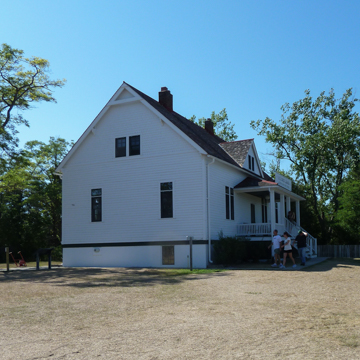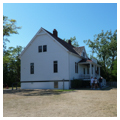Sleeping Bear Point Life Station is strategically located on an extremely dangerous segment of the coastline along the narrow portion of the Manitou Shipping Passage between Sleeping Bear Point and South Manitou Island. The Manitou Passage was one of the busiest marine passages in the United States. During the nineteenth century the majority of vessels bound out of, or into, Lake Michigan had to make their way through the channel between Sleeping Bear Dunes and the Manitou islands from the tip of the Leelanau Peninsula to Frankfort.
Under contract to the U.S. Life-Saving Service, now the U.S. Coast Guard, Robert H. B. Newcombe built the complex of wooden structures after plans prepared in 1890 for the Marquette, Michigan, Life Saving Station. A lifesaving station of identical design was at Sault Ste. Marie. The keeper and surfmen, generally men familiar with local weather conditions, used the station as a base from which to patrol beaches with lanterns to ward off ships too close to shore and to launch small wooden rowboats to rescue shipwreck survivors. The crew lived in the dwelling. Beneath a small central gable of the simple, wooden, side-gabled dwelling, a comfortable front porch overlooks the broad sweep of the bay. Standing nearby is the board-and-batten boathouse, through whose large, paired double doors rescue boats were launched. Its hipped roof with flaring eaves is supported by exposed rafters and is topped with a short conical-roofed cupola. Outbuildings and a signal tower, built in 1914, also survive.
Operations at the station ceased in 1944. The Coast Guard officially closed the station in 1958. Today the National Park Service interprets here the maritime history of shipping in the Manitou Passage and the old lifesaving service.


















